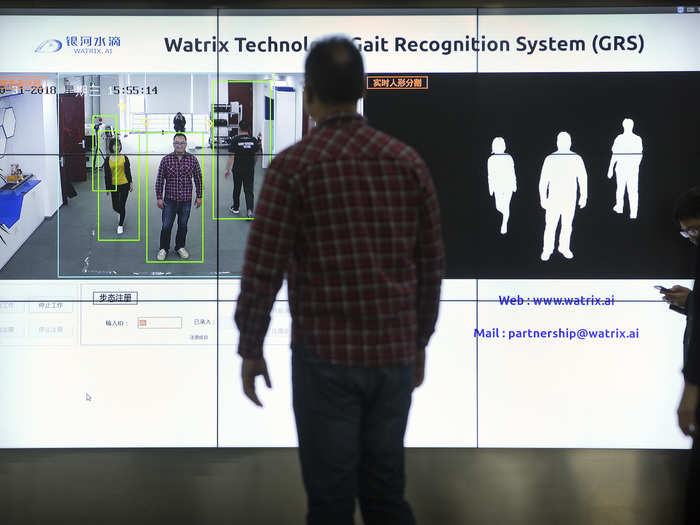
Gait recognition analyzes how people move as they walk, including stride length and the angle of their arms. Watrix, a Chinese company that has developed a version of the software being piloted by Chinese police, claims it is 94% accurate.

In a different iteration of gait recognition, the Pentagon is reportedly testing software that would enable a smartphone to identify who's carrying it based on their walking pattern, according to the Washington Post. The technology could theoretically be used to quickly deactivate government agents' smartphones if they are stolen.

Researchers at the University of Manchester developed software that can use "floor-only sensor data" to identify specific people based on the rhythm of their walk without the aid of any visuals.

The device, known as the Jetson, uses laser vibrometry to detect "surface movement" generated by a person's heartbeat, according to the MIT Technology Review. The laser works through clothes, and can match heartbeats to a database of "cardiac signatures" to identify individuals.

In a paper entitled "Et Tu Alexa?," researchers from the University of Chicago and University of California at Santa Barbara wrote that hackers can easily use WiFi devices in peoples' homes to detect when humans are moving around based on WiFi interference. The findings mean WiFi can be used as a surveillance tool to detect whether someone is physically located inside a specific structure. However, the detection technology is not capable of distinguishing between different humans, or even between humans and large animals.

The technology is still mostly theoretical, but an MIT researcher developed a concept for artificial intelligence software that can track users' motions and heart rate using wireless sensors and predict their emotional state accordingly.

Algorithms could potentially be turned towards tracking microbial cells — bacteria that lives inside our bodies — that people constantly emit, according to Wired. A 2015 study found that the microbial cells can be effectively used to identify specific individuals with up to 80% confidence.

Tokyo-based engineers developed a car seat that recognizes the shape of users' rear and their weight, according to Wired. The technology is theoretically meant to prevent car theft, but has not yet hit the market — however, it illustrates the sheer range of biometric data that can potentially be gauged by artificial intelligence.
 Colon cancer rates are rising in young people. If you have two symptoms you should get a colonoscopy, a GI oncologist says.
Colon cancer rates are rising in young people. If you have two symptoms you should get a colonoscopy, a GI oncologist says. I spent $2,000 for 7 nights in a 179-square-foot room on one of the world's largest cruise ships. Take a look inside my cabin.
I spent $2,000 for 7 nights in a 179-square-foot room on one of the world's largest cruise ships. Take a look inside my cabin. An Ambani disruption in OTT: At just ₹1 per day, you can now enjoy ad-free content on JioCinema
An Ambani disruption in OTT: At just ₹1 per day, you can now enjoy ad-free content on JioCinema In second consecutive week of decline, forex kitty drops $2.28 bn to $640.33 bn
In second consecutive week of decline, forex kitty drops $2.28 bn to $640.33 bn
 SBI Life Q4 profit rises 4% to ₹811 crore
SBI Life Q4 profit rises 4% to ₹811 crore
 IMD predicts severe heatwave conditions over East, South Peninsular India for next five days
IMD predicts severe heatwave conditions over East, South Peninsular India for next five days

Copyright © 2024. Times Internet Limited. All rights reserved.For reprint rights. Times Syndication Service.